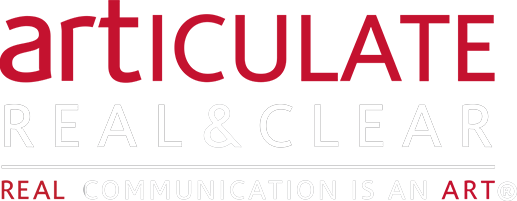Webinars and teleconferences are on the rise. They are more and more an essential part of many businesses’ meeting and training solutions and rely heavily on the speaking voice. Often, as presenters, we can ignore the fact that our voices are creating the visuals on the phone conference, as well as enhancing the visuals for a webinar. When we only hear a voice – on the phone or radio for example – we fill in many visuals based on assumptions. We decide how tall, how old, what gender, hair color, ethnicity, job, economic standing, and educational level; we often even decide what they are wearing.
How often do we see someone after having heard them first and say, “wow, that’s not at all what I thought he or she would look like.”
If we instinctively fill in the story and background, shouldn’t we, as presenters, consider giving more information with our vocal choices? In professional settings, we often omit the vocal choices because it seems more professional to drop our pitch and keep a rather flat or monotone speaking quality. We know, however, as listeners that we do not find this a helpful nor engaging experience because a great deal of detailed information is being left out of the message.
Think of the different meanings we can convey with the simple word “no.” With the combination of inflection, intonation, rhythm, i.e. our prosodic choices in voicing, the messaging of “no” can be altered to mean:
· “Stop!”
· “Are you kidding?”
· “Is it really you?”
In some cases, one simple word can have the complete opposite meaning due to vocal variation. As in the case of saying the word “really,” it can mean that you do believe or you don’t believe something. While often we worry about our word choice, we also must be aware that “how” we say something can change the entire meaning of a sentence.
Two Dangers:
One – you’ll put your audience to sleep or drive them to check their email because your tone is flat and lacks any variety.
Two – you’ll try some inflection but it is not connected to the meaning of the message and the sing-songy rhythm loses the meaning and the audience’s attention.
3 Essential Tips:
One. Acknowledge that you can follow a speaker more easily if they have some vocal variety -prosodic qualities such as inflection, intonation, pauses, rhythmic changes, etc. If this helps you understand the meaning, then it most likely will help your listeners as well. Some people fall into a monotone vocal choice they assume is more professional. Actually, professional is when the message is delivered succinctly and clearly. Vocal variation is essential for ease of message transfer.
Two. Notice that you receive a great deal of information from how something is said. You can tell if a friend is truly happy about something or not. It’s more important how you share your message vocally than it is that you have the exact terms. How you say it directly impacts what you are actually saying. Your audience can hear your commitment, your authenticity, your enthusiasm. — or lack thereof.
Three. Practice using your smartphone or other simple recording device, and listen back to yourself.
Record this sentence,“we are implementing a new invoice system,” with these 3 variations:
1. As if it is truly going to be easier and make everyone’s life easier.
2. As if this is a ridiculous waste of money.
3. As if you couldn’t care less.
Listen back – listen for prosodic differences – inflection, intonation, rhythm, etc. Let someone else listen and check if they can hear any differences. You may notice that you hold some words or parts of words longer. You may change up the rhythm by going slowly through the first few words and then speeding up or vice versa. You may lift you voice or pitch on certain words or syllables. You may emphasize certain sounds within specific words.
When conducting a webinar or leading a phone conference, you may be speaking for an hour or more. Be brave, take a risk and use some vocal variation. Remember, it must be connected to the meaning. Be sure that the listeners can hear your opinion, hear the key points, hear your authenticity. Your voice can guide them to what is important and in turn they will remain engaged; hear the message and commit to action.






